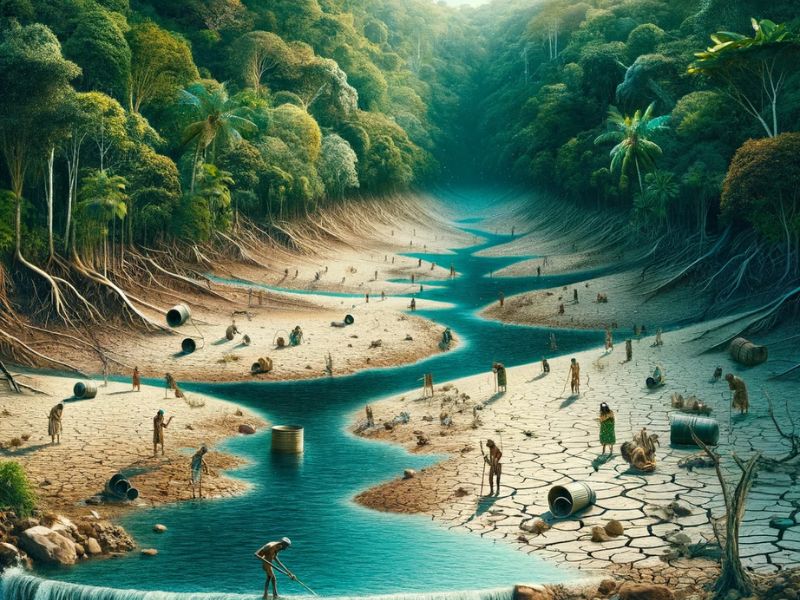
Water Emergency in the Amazon: Indigenous Peoples' Struggle for Survival
Environmental Crisis Exacerbates Health Challenges in Indigenous Communities
A Forgotten Crisis: Drought in the Amazon
The Amazon Rainforest, known for its biodiversity and vitality, is facing an unprecedented water crisis. Indigenous peoples, guardians of this forest, are experiencing desperate conditions. The prolonged drought has led to a shortage of potable water, food, and medicine, jeopardizing the survival of communities. Rivers, once abundant and vital for transportation and fishing in the rainforest, are drying up, leaving behind arid lands and muddy watercourses. APIAM, representing 63 tribes, has appealed to the Brazilian government to declare a climate emergency to address the extreme vulnerability of indigenous populations.
The Impact of Extreme Climatic Conditions
The Amazon is under the influence of the El Niño phenomenon, which has drastically reduced rainfall in the northern region below the historical average. Major rivers like the Rio Negro, Solimoes, Madeira, Jurua, and Purus are drying up at an alarming rate. Forest fires, fueled by drought, are devastating new areas of the rainforest. These conditions have not only exacerbated the environmental crisis but have also hindered access to essential resources for indigenous communities.
Challenges in Providing Medical Assistance
The environmental crisis in the Amazon has created unprecedented obstacles in delivering medical assistance. With the main rivers becoming impassable, traditional transport routes are disrupted, making it extremely difficult for medical teams to reach isolated villages. Indigenous communities, already vulnerable, now face even more limited access to essential health services. They are forced to undertake strenuous journeys through the rainforest to find sources of potable water, often exposing themselves to high risks.
Water, now a rare and precious resource, is often contaminated, increasing the risk of diseases such as cholera, dysentery, and other infections. This problem is compounded by the lack of healthcare infrastructure in remote areas, where even the basics for proper hygiene are missing. Communities struggle with an increasing incidence of waterborne diseases, while access to timely medical care is almost nonexistent.
The Brazilian government, in response to this critical situation, has established a task force to provide emergency assistance. These efforts include distributing tens of thousands of food parcels to isolated communities, but the scope of this assistance is often limited by logistical challenges and the vastness of the region. Moreover, the delivery of medical supplies and access to qualified personnel remain daunting tasks.
The most remote and isolated communities are particularly affected, with some not receiving medical assistance for weeks or even months. In these areas, traditional healers and indigenous medical practices become the only sources of relief, although they are often insufficient to address severe or acute illnesses. The situation is further complicated by the arrival of new diseases and the lack of vaccinations, making these populations even more exposed to health risks.
In this race against time, non-governmental organizations and international relief groups are trying to bridge the gap, working tirelessly to bring medical aid and support to indigenous communities. However, without a coordinated and sustained commitment at the national and international level, overcoming these challenges remains a difficult goal to achieve.
The Need for Global Action
This crisis requires immediate and coordinated action at the international level. It is essential to raise awareness of the critical situation facing the indigenous peoples in the Amazon and mobilize resources to provide concrete aid. The water crisis highlights the importance of protecting vital ecosystems like the Amazon and supporting vulnerable communities in the face of climate change. The joint commitment of governments, international organizations, and civil society can bring life-saving aid and create a sustainable future for the affected populations.


